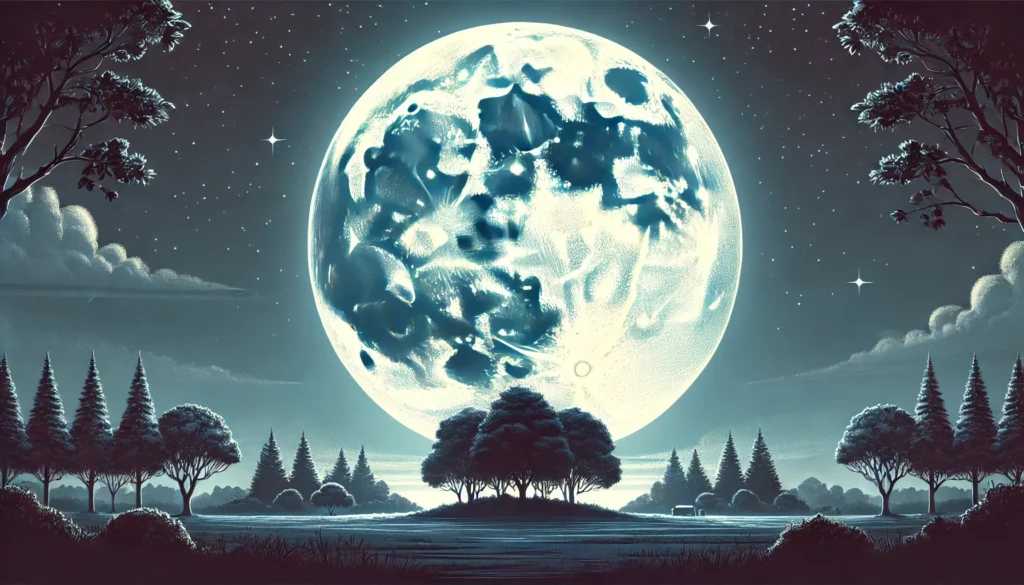Does the idea of witnessing a rare celestial event excite you? What if I told you these captivating occurrences might not be as special as they seem?
Have You Observed the Supermoon?
The supermoon, claimed to happen once every 20 years, made headlines again this year. Did you manage to observe it? Are you eagerly awaiting the next supermoon? Or do you think terms like “super blue moon” or “super blood moon” are essentially meaningless?
Throughout the year, you’ve probably come across supermoon-related news on websites or social media. These reports often grab significant attention, even from people who usually have no interest in astronomy.
Supermoon: A Tool for Misinformation?
While initially seen as a way to spark public interest in the sky, the supermoon concept is often exaggerated and prone to misinformation. For instance, on August 20, 2024, it was reported that the next supermoon wouldn’t occur until 2037. Yet, just a month later, another supermoon appeared in the news, this time dubbed the “super blood moon.”
The Astronomical Meaning of a Supermoon
The Moon completes an orbit around Earth approximately every 27 days. However, its orbit is elliptical, not a perfect circle. This means the Moon sometimes comes closer to Earth and sometimes moves farther away. When at its farthest point (about 405,000 km), it is in apogee. At its closest point (363,000 km), it is in perigee. A supermoon occurs when the full moon coincides with its perigee position.
How Big is the Supermoon Really?
Contrary to popular belief, the supermoon isn’t dramatically larger to the naked eye. In reality, its apparent size is only about 7% greater than usual, a difference too small to notice without instruments.
Social media and news outlets often claim that the supermoon is 14% larger and 30% brighter. However, these figures are comparisons with the so-called “micromoon,” when the Moon is at its farthest distance. When compared to an average full moon, the difference is closer to 7%, making it practically unnoticeable.
The Concept of Angular Diameter
Angular diameter, a measure used to describe the apparent size of celestial objects, helps us understand the supermoon better. During a micromoon, the Moon appears 29.5 arcminutes wide, while during a supermoon, it spans 33.5 arcminutes. This slight difference is imperceptible to the naked eye.
Perceptual Illusion: Why Does the Moon Appear Larger?
The Moon often looks bigger when near the horizon, but this is purely a perceptual illusion. Our brains compare the Moon’s size to nearby objects like trees, buildings, or mountains. This phenomenon can be explained through famous optical illusions like the Ebbinghaus and Ponzo illusions. The Moon’s actual size does not change.
Why Do Celestial Objects Appear Red?
The reddish hue of the Moon, often observed near the horizon, is caused by Rayleigh scattering. This phenomenon occurs as the atmosphere scatters shorter blue wavelengths of light, leaving only longer red wavelengths to reach our eyes. It’s the same process responsible for the reddish appearance of the Sun and other celestial bodies near the horizon.

The Origins of the Supermoon Concept
The term “supermoon” was first introduced in 1979 by American astrologer Richard Nolle. However, it lacks any scientific foundation. The concept is more rooted in astrology, with little significance in actual astronomy.
Supermoon and Pseudoscience
Astrologers often link supermoons to natural disasters, making various predictions. However, there is no scientific evidence supporting the claim that the Moon’s gravitational pull triggers earthquakes. Such predictions stem from confusing correlation with causation.
Conclusion Supermoon and Real Astronomy
Professional astronomers do not consider the supermoon an event worth special attention. Supermoons can occur several times a year and are not substantially different from regular full moons. While there are many other awe-inspiring celestial events visible to the naked eye, the supermoon’s popularity is largely a product of media and social media aiming for clicks and views.
